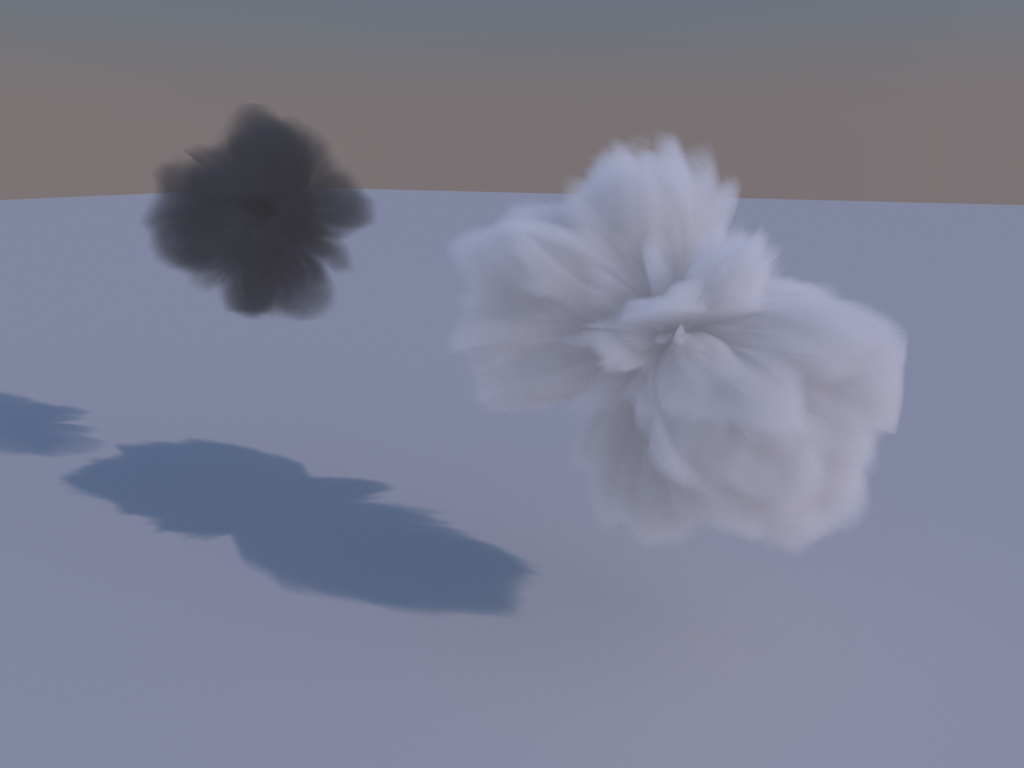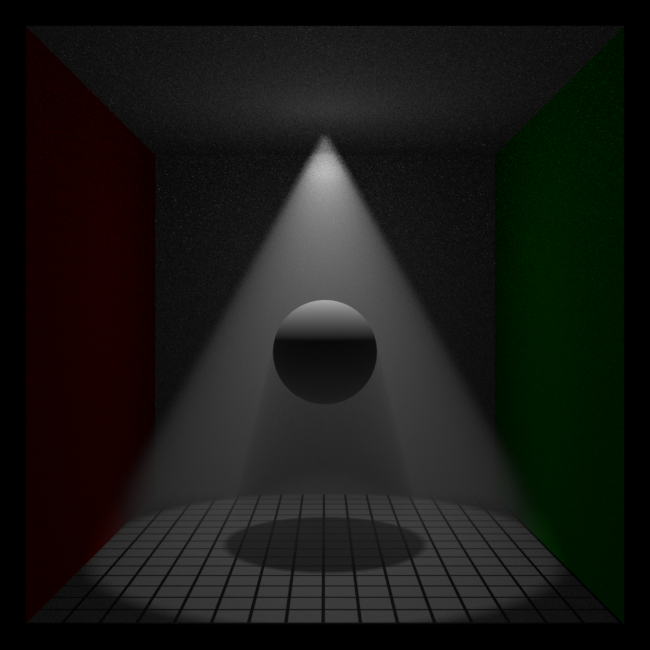Volumetrics
I’ve now got scene-wide homogeneous single-scattering and multiple-scattering of heterogeneous volumes rendering in Imagine.
I’m not doing importance sampling yet, so there’s room for improvement there, and I’m not taking possible emission into account yet - when I do this I might try and get a black body shader working for the emission values.
The above image is a procedural pyroclastic cloud - for the moment I’m not going to spend too much time modelling volumes, as that’s quite a task in itself, but I’ve implemented a dense grid and at some point, I’ll try and implement a sparse grid for better memory-efficiency and storage. I could have used Field3D’s versions, but the dense version is trivially simple anyway, and ignoring memory limits and paging in the sparse version, I don’t foresee that being that difficult either, plus the dependency on HDF5 is more trouble than it’s worth.
I was tempted to try to get OpenVDB integrated, but the Boost and Intel TBB dependencies put me off for the moment, but it seems a nice solution.
Above is a bound single-scattering medium in a Cornell Box, with the cliché spotlight.
For scene-wide mediums, there’s an interesting limitation which in hindsight is obvious, but I hadn’t thought of before: image-based (or environment) lighting doesn’t really work. It definitely doesn’t work when you set the light distance to infinity or large values, and while it’s usable to a limited extent at much closer values, it’s not really practical. So I’m not really sure how useful scene-wide mediums are in practice - in production, they seem to be mainly used for god-rays anyway, so…


